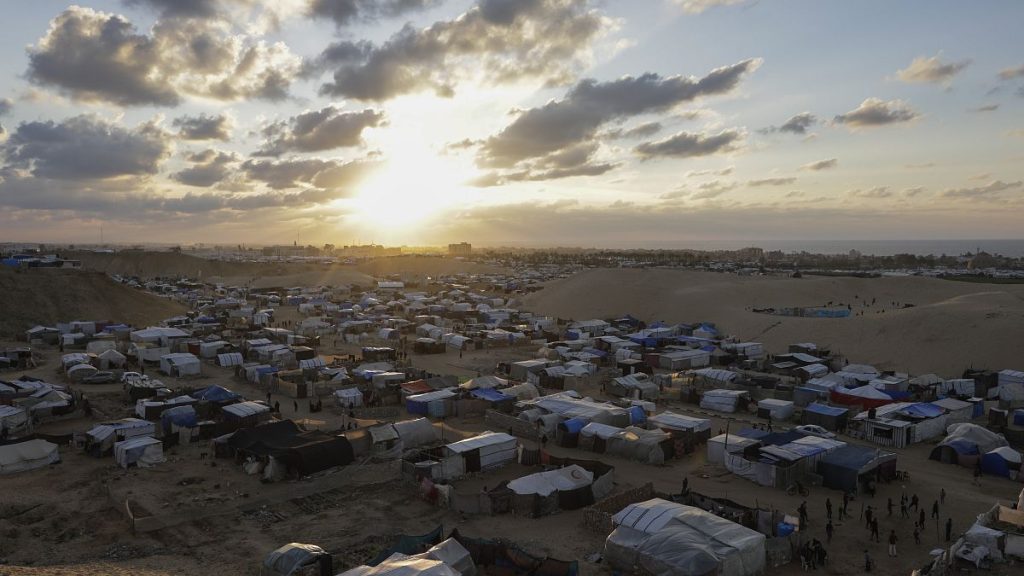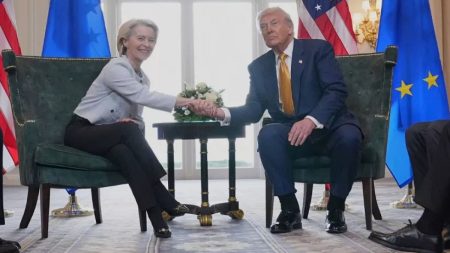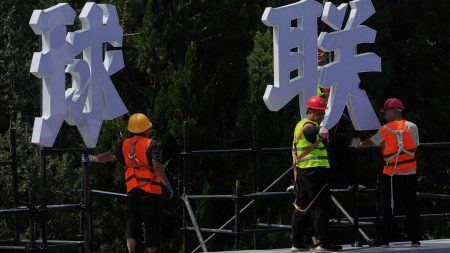The protracted conflict between Israel and Hamas, marked by a devastating 15-month war, appeared to reach a turning point with a negotiated ceasefire agreement. Brokered by the United States, Qatar, and Egypt after months of arduous indirect talks, the deal aimed to halt the hostilities and address critical humanitarian concerns, including the release of hostages and prisoners. However, the ceasefire’s implementation experienced an immediate snag as a dispute arose over the exchange of hostages, delaying the planned start time. Israel insisted on receiving the list of hostages to be released by Hamas before the truce could commence, a demand Hamas attributed to “technical field reasons” while reaffirming its commitment to the agreement. The Israeli military, meanwhile, declared it would continue its operations within the Gaza Strip until the hostage list was provided.
The ceasefire agreement, approved by the Israeli Cabinet, offered a multi-stage approach to resolving key issues. The first phase, spanning six weeks, focused on the release of 33 hostages held by Hamas in exchange for 737 Palestinian prisoners held by Israel. This initial phase also included the eastward withdrawal of Israeli Defense Forces (IDF) from densely populated areas in Gaza, enabling the return of thousands of displaced Palestinians, and a significant increase in humanitarian aid deliveries to the beleaguered territory. Subsequent phases, though agreed upon in principle, required further negotiation to finalize the details. Phase two envisioned the release of the remaining hostages and a full IDF withdrawal from Gaza. Phase three aimed to facilitate the return of the bodies of remaining captives to Israel in exchange for a comprehensive, internationally supervised three-to-five-year reconstruction plan for Gaza.
Beyond the immediate ceasefire terms, the agreement carried significant political weight. Israeli Prime Minister Benjamin Netanyahu presented the ceasefire as a temporary measure, asserting Israel’s right to resume hostilities if necessary. He claimed support from then-President-elect Donald Trump and attributed Hamas’s agreement to Israel’s perceived military successes in Lebanon and Syria. Netanyahu portrayed the deal as the best possible outcome, even as it faced opposition from within his own government, with far-right Public Security Minister Itamar Ben-Gvir threatening resignation. Public dissent also manifested in protests in Jerusalem, where demonstrators criticized the ceasefire as a betrayal and demanded Netanyahu’s resignation and the continuation of the war.
Adding a poignant dimension to the unfolding events, Israel announced the recovery of the body of Oron Shaul, a soldier killed in the 2014 Israel-Hamas war. A complex operation involving elite commando forces secured the return of Shaul’s remains, held by Hamas for a decade. While this repatriation provided some measure of closure, the body of another soldier from the 2014 conflict, Hadar Goldin, remained in Hamas’s possession. The families of both soldiers had long campaigned for the return of their remains, a deeply sensitive issue for the Israeli public.
The war exacted a devastating toll on Gaza, decimating its infrastructure and displacing a vast majority of its population. International assessments painted a grim picture of the damage, with rebuilding costs estimated in the billions of euros. Furthermore, the prolonged Israeli blockade threatened to cripple Gaza’s economy for generations, raising profound concerns about long-term recovery and stability. The ceasefire, while fragile, offered a glimmer of hope for addressing these urgent humanitarian and economic challenges.
The conflict’s roots trace back to the October 2023 cross-border attack by Hamas into Israel, resulting in the deaths of over 1,200 people and the capture of approximately 250 hostages. Israel’s subsequent military response inflicted heavy casualties in Gaza, with estimates of Palestinian deaths exceeding 46,000. The ceasefire agreement, while imperfect and facing immediate challenges, represented a crucial step towards ending the immediate bloodshed and addressing the deep-seated issues fueling the conflict. The agreement’s longevity, however, hinged on the delicate balance of adhering to its terms and navigating the deep mistrust between the warring parties. The international community played a critical role in mediating and supporting the ceasefire, underscoring the need for continued engagement to achieve a lasting peace.














